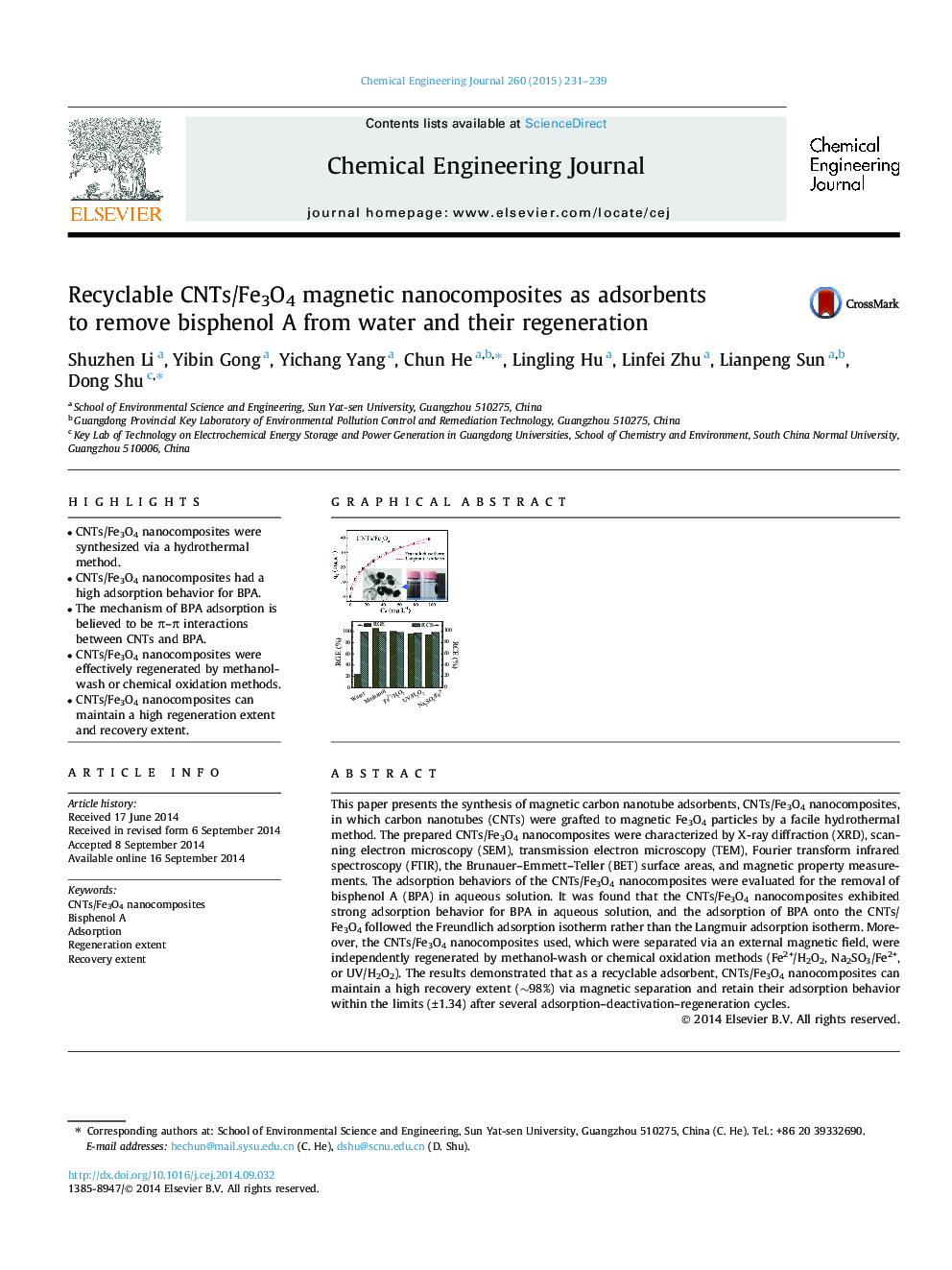| کد مقاله | کد نشریه | سال انتشار | مقاله انگلیسی | نسخه تمام متن |
|---|---|---|---|---|
| 146741 | 456378 | 2015 | 9 صفحه PDF | دانلود رایگان |

• CNTs/Fe3O4 nanocomposites were synthesized via a hydrothermal method.
• CNTs/Fe3O4 nanocomposites had a high adsorption behavior for BPA.
• The mechanism of BPA adsorption is believed to be π–π interactions between CNTs and BPA.
• CNTs/Fe3O4 nanocomposites were effectively regenerated by methanol-wash or chemical oxidation methods.
• CNTs/Fe3O4 nanocomposites can maintain a high regeneration extent and recovery extent.
This paper presents the synthesis of magnetic carbon nanotube adsorbents, CNTs/Fe3O4 nanocomposites, in which carbon nanotubes (CNTs) were grafted to magnetic Fe3O4 particles by a facile hydrothermal method. The prepared CNTs/Fe3O4 nanocomposites were characterized by X-ray diffraction (XRD), scanning electron microscopy (SEM), transmission electron microscopy (TEM), Fourier transform infrared spectroscopy (FTIR), the Brunauer–Emmett–Teller (BET) surface areas, and magnetic property measurements. The adsorption behaviors of the CNTs/Fe3O4 nanocomposites were evaluated for the removal of bisphenol A (BPA) in aqueous solution. It was found that the CNTs/Fe3O4 nanocomposites exhibited strong adsorption behavior for BPA in aqueous solution, and the adsorption of BPA onto the CNTs/Fe3O4 followed the Freundlich adsorption isotherm rather than the Langmuir adsorption isotherm. Moreover, the CNTs/Fe3O4 nanocomposites used, which were separated via an external magnetic field, were independently regenerated by methanol-wash or chemical oxidation methods (Fe2+/H2O2, Na2SO3/Fe2+, or UV/H2O2). The results demonstrated that as a recyclable adsorbent, CNTs/Fe3O4 nanocomposites can maintain a high recovery extent (∼98%) via magnetic separation and retain their adsorption behavior within the limits (±1.34) after several adsorption–deactivation–regeneration cycles.
Figure optionsDownload as PowerPoint slide
Journal: Chemical Engineering Journal - Volume 260, 15 January 2015, Pages 231–239